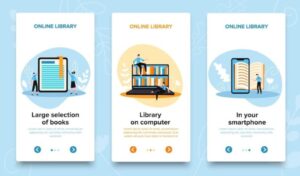7 Innovative Strategies To Help Every Educator In The Classroom

“Education should not be the filling of a pail, but the lighting of a fire”- W.B. Yeats.
Picture this. You are sitting in a class with your teacher speaking in a stretch in a dreary voice. You are striving to keep your eyelids even ajar while being lost in a state of oblivion. Does this situation seem familiar? Maybe this reminded you of a class from which you took away nothing more than the mere skill of pretending to stay awake in a dull and dry lecture. This is perhaps because your educators never cared to implement innovative teaching strategies to keep you interested.
This was your student life. You passed through it anyhow dodging those lectures or by revamping your pretense game. Now, you are on the other side of the fence- either as an educator or heading towards becoming one. You are looking for remarkable ways to make your teaching effective so that your pupils do not shun your lectures at the least.
The greatest challenge lies in captivating your students’ attention and conveying lessons effectively enough to create a lasting impression.
In today’s comprehensive blog post, I aim to present certain innovative and unique ideas that will enable you to reinvent your teaching strategies and create a lovable experience for your pupils in the near future.
Innovative Ways Educators Can Make Classroom Innovative
-
Cross Over Teaching
While this teaching method does not include technology, it is an enriching experience for the faculty and the students.
In this remarkable method, the learning takes place in an informal setting like after-school learning clubs or trips to exhibitions and museums. This method links the educational content with issues that matter to learners in their lives. Students can then add to the classroom discussion through field trip notes, photographic projects, and other group assignments associated with the trip.
Furthermore, since the learning takes place over a lifetime by drawing on experiences across multiple settings, it provides a brilliant opportunity to support learners in linking, recording, recalling, and sharing their diverse learning events.
-
Educating Through Flipping Classrooms
According to recent research, 96% of educators who have flipped a lesson will recommend the remarkable method to others. Again, 71% of teachers claimed that their students’ grades had improved hugely since implementing a flipped classroom strategy.
Flipping the classroom is becoming an increasingly celebrated and effective teaching method. In this exemplary technique, the students are made active participants of the learning process by passing the onus of learning. This method requires the educators to relegate to resource providers, whereas students take on the responsibility of assimilating information on varied fundamental concepts.
Furthermore, with the aid of varied technology tools, students are encouraged to construct knowledge, fill in the information gaps and make inferences on their own as and when required.

-
Educating Through Interactive Smart Boards
According to Grand View Research, the global smart board education market is projected to reach a value of $2.8 billion by 2027, with a compound annual growth rate of 7.6%.
Smartboards are an incredibly innovative and effective way to bring the classroom to life while enabling students to experience deeper engagement and understanding. This is accomplished by making the course content increasingly interactive and visual. These interactive smartboards can easily convert the teaching experience into an interactive and collaborative experience. This is as the teachers use dynamic multimedia content to help convey the topic effectively to the students making it a visual and engaging experience.
-
Offering ‘Real-World Learning’ Experience
When you infuse real-world experiences into your teaching instructions, you can easily make your teaching moments fresh and enrich the classroom learning by leaps and bounds. The primary objective is to have your students investigate and respond to authentic, engaging, and complex issues.
Relating and demonstrating effectively through real-life situations will make the learning material easy to comprehend and memorize. It will spark their interest by getting them all excited and involved. Furthermore, such remarkable ‘real-world learning’ classes will help students develop critical thinking, creativity, collaboration, and communication skills. These are highly sought-after 21st-century skills valued highly by employers.
-
Teaching Though High Collaboration
Today, we live in a globalized world, and collaboration is a vital life skill that is crucial for all careers and enterprises. As an educator, you can help to foster this skill in the classroom by allowing students to study and work in groups.
According to reputed online exam help forums, collaborative learning boosts engagement rates to over 90% and supercharges students’ response rates to 75.9% with tailored questions.
Today, collaboration as a form of teaching is gaining quite the acceptance where educators play the role of guides and mentors while the responsibility is on the group of students. It also teaches students negotiation skills, teamwork, empathy, and vital problem-solving skills.
-
Educating Through Virtual Reality
The VR in the education market is predicted to be a $200 million industry by 2020 and $700 million by 2025. Additionally, 97% of students prefer to learn through a VR course.
Virtual Reality technology involves helping students learn through interactions with a 3D world. Like, instead of taking students through a monotonous history class, you can make use of the 3D technology to help them explore ancient civilizations, travel to distant countries for a class in geography, or even take a trip to the outer space during a class on science.
Reads More: Increase Brand Repute Using Stylish Custom Soap Boxes
VR offers students a brilliant opportunity to learn in an immersive way that creates a lasting impression on the students’ minds. Furthermore, it makes learning an excessively fun process helping them retain the material for a longer duration.
-
3D Printing Technology Equipped Lessons
Educators looking for innovative teaching methods can also consider 3D printing as a means of teaching. According to a new report from MakerBot, 79% of educators used 3D printing as part of their coursework, while 36% used it to increase student engagement.
Teachers can also use 3D printing as an innovative method of teaching. This method is gaining global acceptance fast, especially in higher educational institutes. Here 3D printers are used to create prototypes and make overly tricky concepts easy to comprehend.
Final Note
Innovation in the education industry is becoming more than just a buzzword. It is rapidly becoming a remarkable way of learning and teaching for both students and teachers, respectively. Innovation in education encourages students and teachers to research, use, and explore tools to unravel something new.
Innovation cannot be tested or graded, but it can be inculcated and built up in students. However, one needs to be careful while introducing innovation and creativity, especially in this environment of high-stakes testing.




